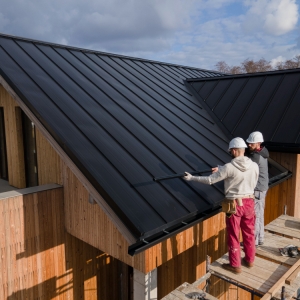In the demanding world of advanced engineering, where machines push the limits of temperature and pressure, every component must perform under extreme duress. Among the most critical yet often overlooked of these components are the bolts that hold everything together. When temperatures soar, ordinary steel fasteners turn soft, lose their clamping force, and can catastrophically fail. This is where the specialized world of high-temperature bolts comes in—a field where metallurgy and mechanical engineering converge to ensure safety, integrity, and performance.
High-temperature bolts are specially engineered fasteners designed to maintain their mechanical properties—specifically tensile strength, creep resistance, and stress relaxation resistance—at elevated temperatures, typically above 500°F (260°C) and up to 1800°F (1000°C) or higher.
Why Ordinary Bolts Fail in the Heat
To understand the need for specialized bolts, it's essential to know what happens to standard carbon or alloy steel bolts under heat:
Loss of Strength: As temperature increases, the yield strength and tensile strength of standard materials plummet. A bolt that can hold 100,000 psi at room temperature may only hold a fraction of that at 1000°F.
Creep: This is the gradual, permanent deformation of a material under constant stress at high temperatures. A bolt under tension will slowly stretch over time, leading to a loss of clamping force and eventual joint failure.
Stress Relaxation: Similar to creep, this is the loss of bolt preload (clamp force) over time while the bolt is held at a constant strain (length). The bolt "relaxes," compromising the seal or integrity of the joint.
Oxidation and Scaling: At high temperatures, standard steels rapidly oxidize, forming a flaky scale that corrodes the bolt's surface and reduces its cross-sectional area, weakening it.

Key Materials for High-Temperature Service
The choice of material is the primary differentiator. Each alloy is selected for its performance within a specific temperature range.
Carbon and Alloy Steels (e.g., ASTM A193 B7, L7): Suitable for temperatures up to about 800°F (427°C). Their strength drops significantly beyond this point. Quenched and tempered, they offer good strength for applications like pressure vessels and pipelines.
Stainless Steels (e.g., ASTM A193 B8M [316], B8 [304]): Austenitic stainless steels like 304 and 316 are good for corrosion resistance and stainless steel bolts perform decently up to ~1500°F (815°C). However, they are prone to carbide precipitation and subsequent sensitization (a form of corrosion) within certain temperature ranges and have lower strength than nickel alloys.
Nickel-Based Superalloys (e.g., Inconel 718, A286, Waspaloy): These are the workhorses for the most extreme conditions. Alloys like Inconel 718 retain exceptional strength and oxidation resistance up to 1300°F (704°C). They offer superb resistance to creep and stress relaxation, making them ideal for aerospace (jet engines), gas turbines, and nuclear applications.
Specialty Alloys (e.g., Hastelloy, Elgiloy, Titanium): Used for specific environments that combine high temperature with extreme corrosion from aggressive chemicals or oxidizing atmospheres.

Design and Manufacturing Considerations
Creating a bolt for high-temperature service involves more than just choosing the right alloy.
Heat Treatment: Precise heat treatment processes are critical to developing the material's microstructure for optimal high-temperature strength and ductility.
Thread Design: Rolled threads are generally preferred over cut threads because the rolling process cold-works the material, creating a smoother, stronger thread with superior fatigue resistance.
Preloading and Lubrication: Achieving accurate preload (clamp force) during installation is paramount. High-temperature anti-seize lubricants are almost always used on the threads and under the nut to prevent galling (cold-welding), ensure accurate torque-tension relationship, and allow for disassembly after service.
Stress Rupture Strength: This is a key design criterion. It indicates the maximum stress a material can withstand for a specified time at a given temperature before it ruptures. Engineers use this data to select the appropriate bolt size and material for the expected service life.
Critical Applications
High-temperature bolts are indispensable in industries where failure is not an option:
Power Generation: Holding together critical components in steam turbines, gas turbines, boilers, and nuclear reactors.
Aerospace and Jet Engines: Fastening turbine blades, compressor cases, and exhaust sections where temperatures and vibrations are extreme.
Petrochemical and Refining: Securing flanges and components in furnaces, reactors, and cracking units that process hydrocarbons at high heat and pressure.
Automotive: In high-performance engines and exhaust systems, particularly in turbochargers.
Installation and Maintenance: A Science in Itself
The job isn't done once the right bolt is selected. Proper installation using calibrated torque wrenches or hydraulic tensioning tools is essential to achieve the designed preload. Furthermore, in critical applications, bolts are often considered life-limited parts. They are subject to regular inspection, retorquing (due to stress relaxation), and replacement schedules based on the number of operating hours or thermal cycles they have endured.

Summary
High-temperature bolts are a perfect example of engineering elegance in the face of extreme challenges. They are not merely pieces of metal but highly engineered components whose precise formulation and manufacture enable the modern world's most advanced technologies. From keeping jet engines intact at 30,000 feet to ensuring the safe operation of a power plant, these unassuming fasteners play an outsized role in holding our high-temperature world together, one secure joint at a time.







